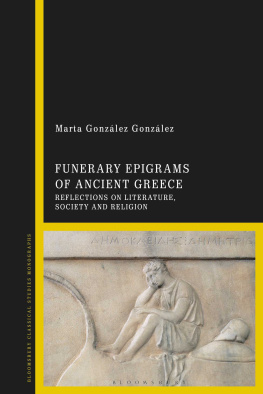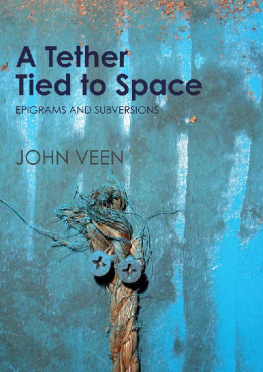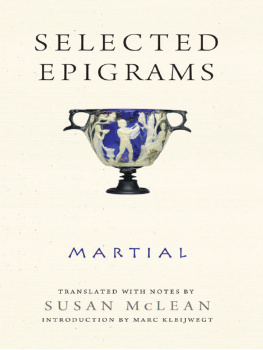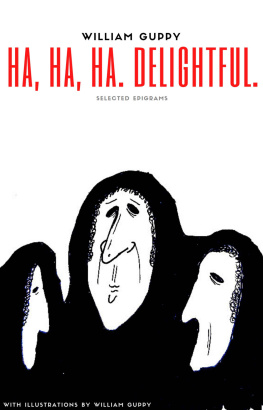
Funerary Epigrams of Ancient Greece
Also published by Bloomsbury
Ethics and Burial Archaeology, Duncan Sayer
Greek Sanctuaries and Temple Architecture, Mary Emerson
Greek Sculpture, Georgina Muskett
Morals and Values in Ancient Greece, John Ferguson
Religion and the Greeks, Robert Garland
The Archaeology of Greek and Roman Slavery, F.H. Thompson
These Were the Greeks, A.G.P. Lang and H.D. Amos
Womens Life in Greece and Rome, Maureen B. Fant and Mary R. Lefkowitz

To my father,
Fausto Gonzlez Velasco (19272014),
who taught all three of us not to use words to hurt
Contents
I would like to begin this volume by expressing my gratitude to some scholars who have generously devoted their time to reading some or all of these pages, have made suggestions and comments that have improved this book immensely, and most particularly, have thus demonstrated their interest in my work and allowed me to participate in an academic dialogue in which, for obvious reasons, I have always been one who has learnt and benefitted. I am first and most especially grateful for the help of Fritz Graf, Jan Bremmer and David Konstan. Other colleagues have allowed me to present some of the arguments that appear in this book at their universities, including Maria Cannata (University of Messina), Lucio Ceccarelli (University of LAquila), Luisa de Nazar Ferreira (University of Coimbra), and Nuno Simes (University of Lisbon). Anonymous reviewers for Bloomsbury Publishing were very helpful, and I appreciate their valuable advice.
I also thank Alice Wright and Emma Payne at Bloomsbury Academic for the enthusiasm and enormous kindness with which they welcomed this book proposal.
Lastly, I am grateful to Nancy Clarneau for the patience she has shown when translating these pages.
Marta Gonzlez Gonzlez
May 2018
Greek funerary art seeks beauty and exalts excellence, arete. Stelai and statues stand along the road with the intent that the passer-by would pause, contemplate, remember and mourn. These are retrospective monuments in the sense that they represent those no longer present, using the best image of what they were in life: splendid athletes, valiant warriors, maidens of promise, loving mothers. These idealized images, not at all realistic, serve not so much to reflect a determined social organization as to actually construct it. To the extent that they look towards the future, they do not speak of punishment or reward, and certainly do not denigrate this life in favour of a better one: if any immortality is imagined, it is the immortality of renown (kleos) attained from the particular virtue commemorated in the epigram, and, in no small measure, from the skill of the artist commissioned for the monument.
In the pages that follow, I will take time to pause at some of these Greek memorials of the Archaic and Classical periods. Although my interest is primarily a literary one, the epitaphs are much better understood in the few cases where their corresponding image, statue or stele is preserved. Naturally, I have taken a selection of epigrams from the extensive corpus, a sample significant in size, not overlooking any of the fundamental examples, and giving priority to those cases where the whole monument ensemble is preserved, both text and image. From this evidence I hope to draw out information about the society that created it, giving attention to the parameters of age, gender and social status. This study is structured around the presentation of such information, ordered within its historical and chronological context.
Chapters 1 (The funerary landscape: a reflection of the world of the living), and 2 (The literary form: tears of Simonides and of Pindar) present the texts and their context, the type of literature that these funerary epigrams represent, and the archaeological landscape in which they are embedded. To expand our field of view, in both time and space, I begin with the archaeological landscape, outlining briefly the evolution of Greek funerary customs and the general traits of the art that emerges from them.
Monuments from the Archaic age are the focus of the next chapter (Chapter 3: Phrasikleia, forever a maiden. Kroisos, whom raging Ares destroyed), focusing especially on the funerary statues that nobles dedicated to their deceased youths. Special attention is given to two exceptional monuments, those of the maiden Phrasikleia and of Kroisos the young warrior, their funerary statues surviving together with the brief elegiac distich of the epitaph.
The Classical age is marked by the appearance of the splendid Attic stelai, attributed by most scholars to the same artists who worked on the reconstruction of the Athenian acropolis after the destruction of the Persian Wars. At this time, the epigrams are somewhat longer than in Archaic times. These funerary monuments target a more diverse social group than those of the Archaic age. The present study focuses on the epitaphs of individuals in the more significant stages of life, where gender differences are most marked. Thus, setting aside childhood and old age, I consider youths who died before their time (Chapter 4: How to deprive the year of its spring). I also study epitaphs that are more unusual in that it is not a family member who makes the dedication but where intimate friendship has prompted commemoration (Chapter 5: Immortal remembrance of friends). The next chapter focuses on the epitaphs of husbands and wives (Chapter 6: Wives and their masters). I devote some space to two types of funerary epigrams that share the unusual element of explicitly mentioning the cause of death: death in childbirth and death at sea. While the first case is linked naturally to the female gender, the second predominantly (though not exclusively) belongs to men (Chapter 7: Powerful enemies: childbirth, the sea).
Finally, the last chapter (Chapter 8: Rewards for piety next to Persephone) focuses on eschatological allusions in funerary epigraphy. In the fourth century especially, we begin to find references to rewards in the hereafter for having attained piety, eusebeia. Interestingly, certain expressions that now appear for the first time in inscriptions bear some resemblance to expressions used in the famous lamellae aureae, focusing on Persephone, Queen of the Underworld.
Most of the evidence in this book comes from Attica, and the Kerameikos remains a fascinating area. However, excavations continue in different parts of Greece, bringing to light works of great interest. I often include this information in a peripheral way to round out the chapters presented here and to put into perspective the tentative nature of the conclusions offered here. If the archaeological funerary landscape reflects the world of the living, then social and historical differences between one region and another are logically manifest in their necropoleis.
It seems justifiable to consider only the metrical epitaphs: they constitute a very extensive but manageable corpus (not the case if we were to consider all epitaphs) and have considerable documentary value. The non-metrical epitaphs convey very little information: the name of the deceased, sometimes his or her place of birth or affiliation, and little more.
Only a small selection of the preserved epigrams will be analysed here, but I have tried to ensure that the sample is relevant. In both the selection and the commentary, I have turned my attention to the aspects that in my opinion have been the most neglected, and to details that enable general claims to be tested, for example that death before
Next page











